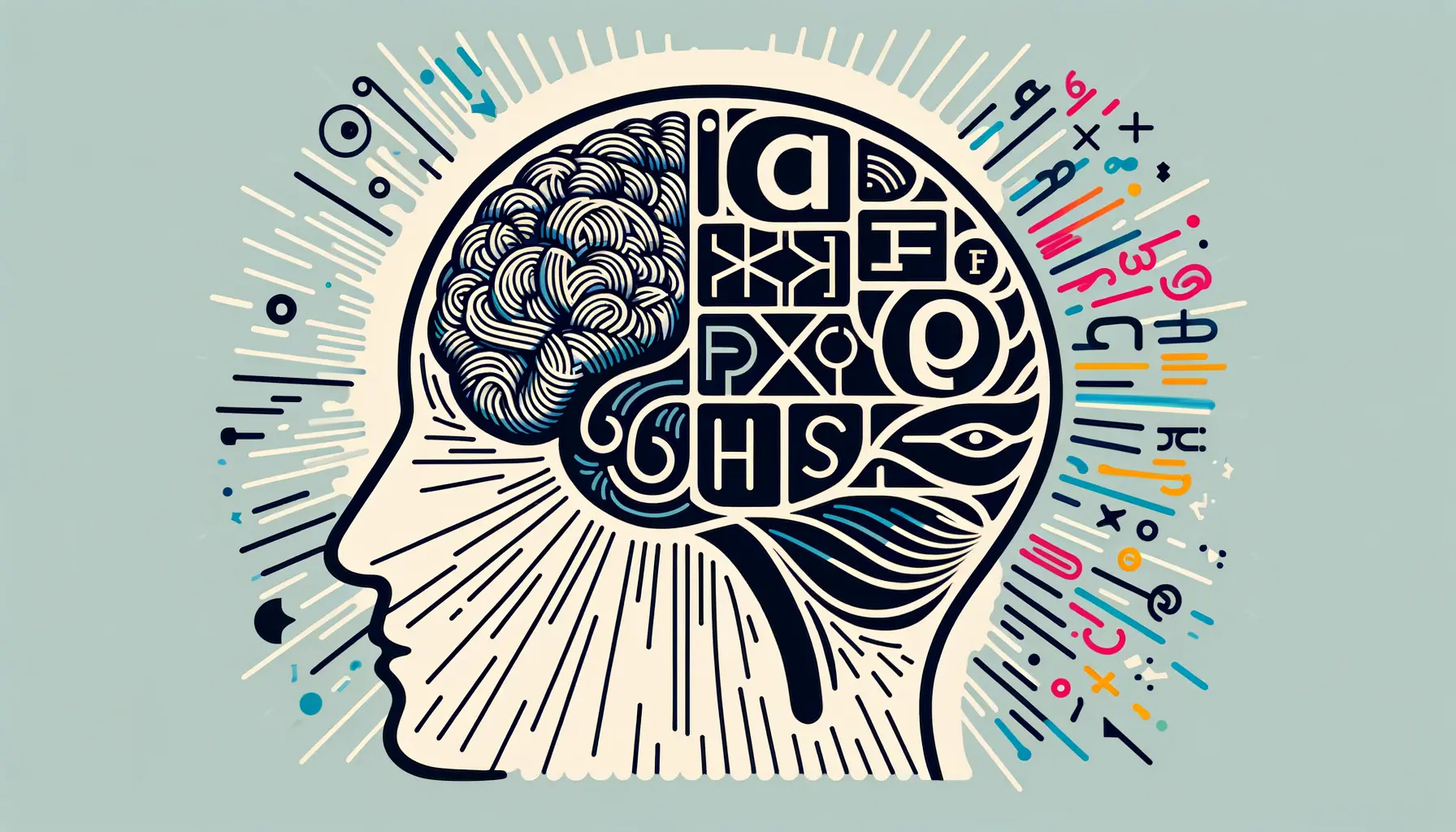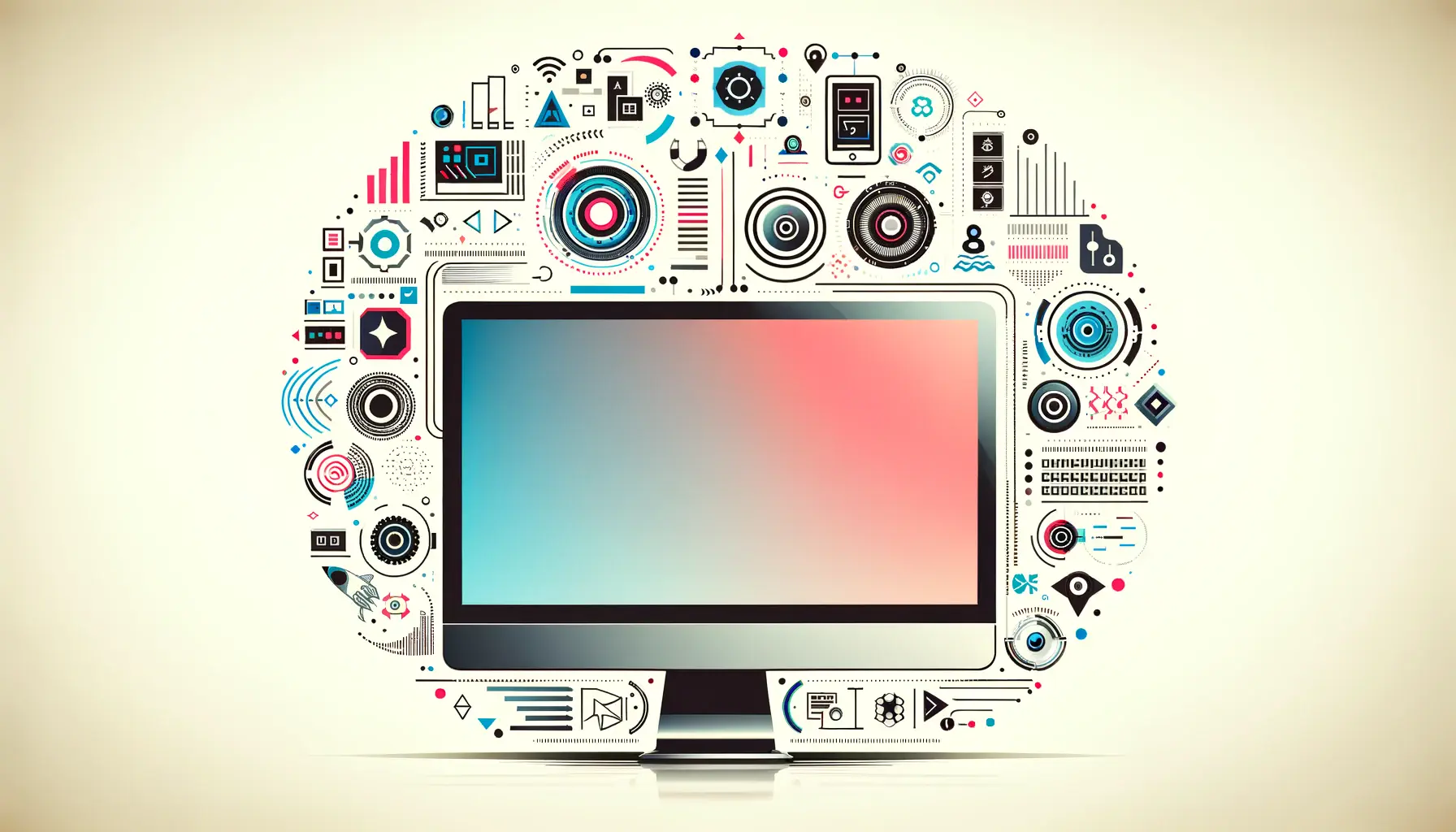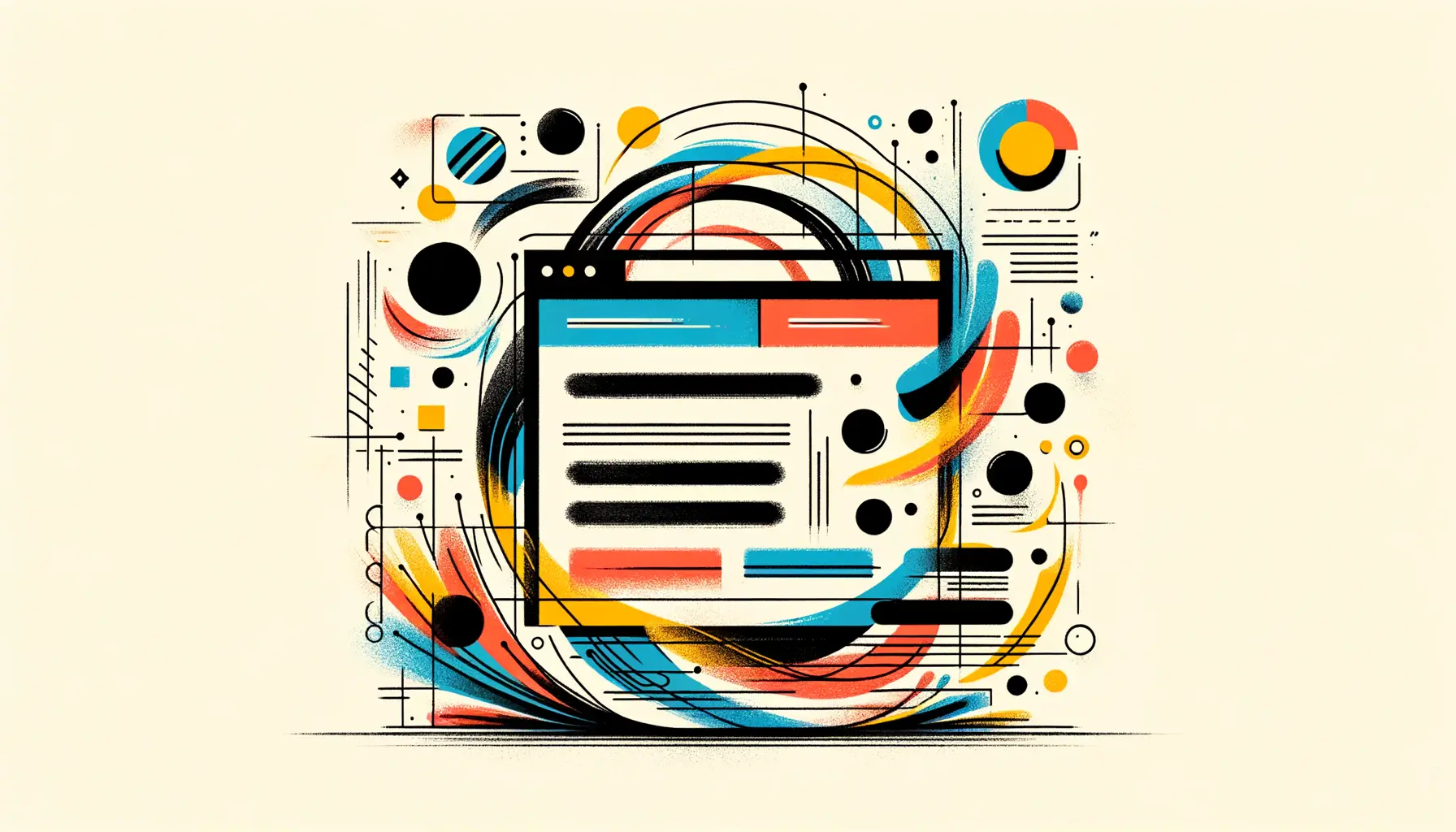Typography, the art and technique of arranging type, plays a crucial role in conveying messages in both print and digital media.
It’s not just about making words legible; it’s about evoking emotions, creating an atmosphere, and communicating ideas effectively.
The choice of typography can significantly influence how a message is perceived, making it a powerful tool in the hands of designers.
However, typography does not exist in a vacuum.
Cultural influences profoundly shape typographic choices, affecting everything from font selection to layout design.
This article explores the intricate relationship between culture and typography, shedding light on how cultural norms, traditions, and history inform typographic decisions.
Understanding the impact of cultural influences on typography requires a deep dive into the ways in which culture shapes our visual language.
From the ornate calligraphy of East Asian scripts to the bold simplicity of Latin alphabets, cultural heritage is embedded in the very fabric of typography.
These cultural underpinnings not only inform the aesthetic qualities of type but also its functionality and accessibility.
By examining the intersection of culture and typography, we can gain insights into the broader dialogue between design and society, and how this relationship evolves over time.
- Exploring Cultural Typography Traditions
- Cultural Symbolism in Typography
- Typography and Cultural Identity
- Impact of Digitalization on Cultural Typography
- Typography in Global Branding and Advertising
- Education and Typography: Teaching Cultural Sensitivity
- Future Trends in Cultural Typography
- Embracing the Future of Cultural Typography
- FAQs on Cultural Influences in Typography Choices
Exploring Cultural Typography Traditions
The Role of History in Shaping Typographic Styles
Historical events and societal shifts have a profound impact on typographic trends and preferences.
For instance, the development of movable type by Johannes Gutenberg in the 15th century revolutionized the way information was disseminated, leading to the proliferation of serif fonts in Europe.
These fonts, characterized by their decorative strokes at the end of letters, became synonymous with formality and tradition, reflecting the cultural values of the time.
Similarly, the Bauhaus movement of the early 20th century, with its emphasis on functionality and simplicity, gave rise to sans-serif fonts.
These fonts, devoid of decorative flourishes, mirrored the cultural shift towards modernism and efficiency.
This historical perspective underscores the importance of understanding the cultural context in which typographic styles emerge and evolve.
Global Typography: A Tapestry of Cultural Identities
Typography is a global language, yet it speaks volumes about local cultures and identities.
Each script and typeface carries the imprint of its cultural origins, from the intricate Arabic calligraphy that reflects Islamic art’s emphasis on geometric patterns to the minimalistic elegance of Japanese kanji.
These typographic choices are not merely aesthetic; they are deeply rooted in cultural traditions, religious beliefs, and social norms.
Designers working across cultures face the challenge of honoring these diverse typographic traditions while creating cohesive, accessible designs.
This balancing act requires a nuanced understanding of cultural typography, an appreciation for the diversity of scripts, and a commitment to inclusive design practices.
By embracing the rich tapestry of global typography, designers can create works that resonate on a universal level while celebrating cultural specificity.
The exploration of cultural typography traditions reveals the deep connections between culture, history, and design. Understanding these connections allows designers to create more meaningful and impactful typographic choices.
Cultural Symbolism in Typography
The symbols and motifs used in typography are imbued with cultural significance, acting as visual shorthand for complex ideas and emotions.
Cultural symbolism in typography extends beyond the mere representation of sounds or words; it encapsulates the values, traditions, and narratives of a society.
This section delves into how cultural symbols are integrated into typographic design, influencing both the message conveyed and the audience’s reception.
At the heart of cultural symbolism in typography lies the choice of typeface itself.
Each typeface carries with it a historical and cultural baggage that can subtly influence the perception of the text.
For example:
- Serif fonts, often seen as traditional and reliable, are frequently used in formal documents and established publications, reflecting a culture of stability and authority.
- Sans-serif fonts, perceived as modern and approachable, are commonly found in digital platforms and contemporary branding, signaling a culture of innovation and accessibility.
Color and Cultural Connotations in Typography
Color plays a pivotal role in typographic design, with each hue carrying its own set of cultural connotations.
The psychological impact of color on the audience can greatly enhance the effectiveness of a typographic piece.
For instance:
- In Western cultures, white is often associated with purity and peace, making it a popular choice for wedding and health-related designs.
- Red, on the other hand, can signify danger or passion in many cultures, making it a powerful tool for attracting attention or evoking strong emotions.
Integrating Cultural Motifs and Patterns
Incorporating cultural motifs and patterns into typography can add layers of meaning and connect with audiences on a deeper level.
These elements can be subtle, serving as background textures or borders, or more prominent, shaping the letters themselves.
Examples include:
- Islamic art’s intricate geometric patterns, which can be woven into the fabric of typefaces used in religious texts or cultural exhibitions.
- Indigenous symbols and patterns, which can lend authenticity and respect to projects related to indigenous cultures and communities.
The thoughtful integration of cultural symbolism in typography not only enriches the design but also fosters a deeper connection with the audience, bridging gaps between cultures and generations.
Typography and Cultural Identity
Typography is a powerful expression of cultural identity, serving as a visual representation of a community’s heritage, values, and aspirations.
Through the choice of typeface, style, and layout, typographic design can communicate much about a culture’s identity, from its historical roots to its contemporary ambitions.
This connection between typography and cultural identity is explored through various lenses, highlighting the role of typography in both preserving and evolving cultural narratives.
One of the most direct ways typography expresses cultural identity is through the use of language-specific scripts and typefaces.
For example:
- Arabic calligraphy, with its fluid and intricate designs, not only serves the practical purpose of communication but also reflects the artistic and spiritual heritage of the Arabic-speaking world.
- The bold, geometric shapes of Cyrillic script typefaces convey the strength and modernity of Slavic cultures, while still paying homage to their rich history.
Reviving Historical Typefaces for Modern Identity
Designers often look to historical typefaces to draw connections between a culture’s past and its present identity.
Reviving and modernizing ancient scripts or traditional typefaces can breathe new life into a cultural identity, making it relevant for contemporary audiences.
Examples include:
- The resurgence of Blackletter in branding for craft beers and artisanal products, linking them to a sense of craftsmanship and heritage.
- Adaptations of Mayan glyphs in visual design projects, connecting modern indigenous communities with their ancestral roots.
Typography as a Tool for Cultural Dialogue
Typography also serves as a medium for cultural dialogue, allowing for the exchange of ideas and values between different cultures.
Through collaborative typographic projects, designers from diverse backgrounds can create a shared visual language that transcends cultural boundaries.
Such initiatives can:
- Promote understanding and appreciation of cultural differences through the fusion of typographic styles.
- Highlight commonalities between cultures, fostering a sense of global unity and shared human experience.
True cultural identity in typography goes beyond aesthetic choices, embedding the essence of a culture’s spirit into the very letters that represent its voice.
Impact of Digitalization on Cultural Typography
The digital era has transformed the landscape of typography, introducing new challenges and opportunities for expressing cultural identity through type.
Digital platforms have democratized typographic design, allowing for greater experimentation and the rapid dissemination of cultural typographic styles.
This section explores the impact of digitalization on cultural typography, highlighting both the preservation of traditional typographic forms and the emergence of new, culturally infused digital typefaces.
One significant impact of digitalization is the increased accessibility of typefaces.
Digital platforms offer:
- A vast library of typefaces from around the world, making it easier for designers to find and use culturally specific fonts.
- The ability for type designers to create and share their own fonts, contributing to the diversity of available typefaces that reflect a wide range of cultural identities.
Challenges of Representing Culture in Digital Typography
While digitalization offers many advantages, it also presents challenges in accurately representing cultural nuances in typography.
These challenges include:
- The risk of cultural homogenization, where the widespread use of popular digital fonts may dilute the unique typographic characteristics of different cultures.
- Technical limitations in rendering complex scripts or calligraphic styles accurately on digital platforms, potentially compromising the integrity of cultural expressions.
Innovations in Digital Cultural Typography
Despite these challenges, digitalization has also led to innovative approaches to cultural typography.
Designers and technologists are finding ways to overcome technical hurdles and create digital typefaces that:
- Preserve the aesthetic qualities and cultural significance of traditional scripts.
- Incorporate cultural motifs and symbols directly into font designs, allowing for a richer expression of cultural identity.
The digital era, while presenting challenges, ultimately enriches the tapestry of cultural typography, offering new tools and platforms for the exploration and celebration of cultural identity through type.
Typography in Global Branding and Advertising
As businesses expand their reach across borders, the role of typography in global branding and advertising becomes increasingly complex and significant.
Typography in this context is not just about aesthetics; it’s a strategic tool for communication, capable of bridging cultural gaps and resonating with diverse audiences.
This part examines how typography is utilized in global branding and advertising to appeal to international markets while maintaining brand consistency and cultural sensitivity.
Global brands face the challenge of designing typographic elements that are:
- Flexible enough to adapt to different cultural contexts without losing the brand’s core identity.
- Capable of conveying the brand’s message effectively across various languages and scripts.
Adapting Typography for Cultural Sensitivity
One key strategy is the adaptation of typography to meet the cultural and linguistic needs of target markets.
This involves:
- Selecting typefaces that are legible and appealing to local audiences.
- Modifying color schemes and typographic layouts to align with cultural preferences and taboos.
- Using local scripts and languages in brand names and slogans to foster a deeper connection with the audience.
Case Studies: Successful Typographic Strategies in Global Markets
Several global brands have successfully navigated the complexities of international typography in their branding and advertising campaigns.
For example:
- A multinational technology company that redesigned its logo using a typeface that maintains visual consistency across Latin, Cyrillic, and Greek scripts, ensuring brand recognition worldwide.
- A global fast-food chain that adjusts its menu typography and design elements to match the cultural aesthetics of each country, enhancing customer engagement and brand loyalty.
Effective typography in global branding and advertising not only ensures visual appeal and brand consistency but also demonstrates respect and understanding for cultural diversity, which is crucial for international success.
Education and Typography: Teaching Cultural Sensitivity
The role of education in shaping typographic designers who are culturally sensitive and aware cannot be overstated.
As typography continues to serve as a bridge between cultures, the need for designers to understand and respect cultural nuances in their typographic choices becomes increasingly important.
This section explores how education can foster a deeper understanding of cultural influences on typography, preparing designers to create work that is both globally relevant and locally resonant.
Educational programs in design schools now often include:
- Courses that cover the history and theory of typography from a global perspective, highlighting the cultural origins and significance of different typographic styles.
- Workshops and projects that encourage students to explore typography in various cultural contexts, challenging them to incorporate cultural sensitivity into their designs.
Integrating Cultural Studies into Typography Education
Integrating cultural studies into typography education is essential for developing well-rounded designers.
This integration can take several forms, including:
- Case studies of successful and unsuccessful examples of cultural typography in commercial and artistic projects, providing practical insights into the dos and don’ts of culturally sensitive design.
- Collaborative projects with students from diverse cultural backgrounds, promoting cross-cultural exchange and learning.
The Role of Professional Development
Beyond formal education, ongoing professional development plays a crucial role in keeping designers informed about the evolving landscape of cultural typography.
This includes:
- Participation in international design conferences and workshops that focus on cultural diversity and typography.
- Engagement with online forums and communities where designers from around the world share insights and experiences related to cultural typography.
By prioritizing education and professional development focused on cultural sensitivity in typography, the design community can ensure that its members are equipped to create work that respects and celebrates cultural diversity, fostering global understanding and connection.
Future Trends in Cultural Typography
The intersection of culture and typography is an ever-evolving landscape, with new trends emerging as societies change and technology advances.
As we look to the future, several trends are poised to shape the way cultural influences are reflected in typographic design.
This exploration into future trends in cultural typography offers insights into how designers might navigate and contribute to this dynamic field in the coming years.
Anticipated future trends in cultural typography include:
- The increasing use of augmented reality (AR) and virtual reality (VR) technologies to create immersive typographic experiences that celebrate and explore cultural heritage in innovative ways.
- A greater emphasis on inclusivity and diversity, leading to the development of typefaces that better represent the world’s linguistic and cultural diversity.
Technological Innovations and Accessibility
Technological innovations will continue to play a significant role in the evolution of cultural typography, particularly in terms of accessibility.
Future developments may include:
- Advanced font rendering technologies that improve the display of complex scripts on digital devices, making it easier for people around the world to access content in their native languages.
- AI-driven design tools that assist in the creation of culturally sensitive typographic designs by analyzing cultural data and providing recommendations.
Sustainability and Typography
As global awareness of environmental issues grows, sustainability is likely to become a key consideration in typographic design.
This could manifest in:
- The creation of eco-friendly typefaces that require less ink and energy to print, reflecting a culture’s commitment to sustainability.
- Design projects that leverage typography to raise awareness about environmental issues, using cultural narratives to connect with audiences on a personal level.
Assuming that cultural typography will remain static is a misconception. The field is set to evolve, incorporating new technologies, philosophies, and practices that reflect the changing world.
Embracing the Future of Cultural Typography
The exploration of cultural influences on typography choices has unveiled the profound connection between culture and design.
As we’ve journeyed through the historical roots, examined the symbolism, and projected future trends, it’s clear that typography is not merely about aesthetics or readability.
It’s a nuanced dialogue between the message and its cultural context, a dance between tradition and innovation.
The future of cultural typography promises a landscape rich with diversity, technology, and sustainability, reflecting the evolving tapestry of human culture.
Navigating Cultural Sensitivities
As designers and typographers, the responsibility lies in navigating cultural sensitivities with care and respect.
The global marketplace demands a nuanced understanding of cultural typography, where the choice of a typeface or design element can bridge cultures or inadvertently create barriers.
The key to success in this intricate field is continuous learning and adaptation, staying informed about cultural nuances, and engaging with the global design community to share insights and perspectives.
Technological Advancements and Cultural Representation
Technological advancements will undoubtedly shape the future of cultural typography.
From the rise of AR and VR to AI-driven design tools, technology offers new avenues for expressing and preserving cultural identities.
These innovations present exciting opportunities for designers to experiment with new forms of cultural expression, making typography more accessible, inclusive, and environmentally sustainable.
- The integration of AR and VR in typographic design will create immersive experiences that celebrate cultural heritage in dynamic and interactive ways.
- AI and machine learning will assist designers in creating culturally sensitive typography, analyzing vast amounts of cultural data to inform design decisions.
- Sustainability will become a central theme in typography, with eco-friendly design practices reflecting a global commitment to environmental stewardship.
In conclusion, the impact of cultural influences on typography choices is a testament to the power of design in shaping our understanding of the world.
As we look to the future, it’s clear that cultural typography will continue to evolve, reflecting the changing landscapes of society and technology.
By embracing these changes with an open mind and a respectful approach, designers can create typographic works that not only communicate effectively but also enrich our cultural landscape.
Quality web design is key for a great website! Check out our service page to partner with an expert web design agency.
FAQs on Cultural Influences in Typography Choices
Explore common inquiries about how culture shapes our typographic landscape.
Cultural typography refers to how typographic choices reflect and are influenced by cultural heritage, values, and narratives.
Cultural influences shape typography through the use of specific scripts, symbols, and design principles that resonate with a culture’s identity.
Yes, thoughtfully designed typography can significantly enhance cultural representation by visually conveying a culture’s unique identity and values.
Cultural sensitivity in typography ensures that designs respect and accurately represent cultural identities, avoiding stereotypes and misinterpretations.
Globalization introduces a blend of typographic styles, promoting cross-cultural exchange while challenging designers to maintain cultural authenticity.
Historical events and traditions significantly influence cultural typography, embedding historical narratives and values into typographic choices.
Designers can incorporate cultural influences by researching and understanding the cultural context, using relevant symbols, and choosing appropriate typefaces.
Future trends include the integration of technology in cultural representation, a focus on inclusivity, and the exploration of new forms of cultural expression.











